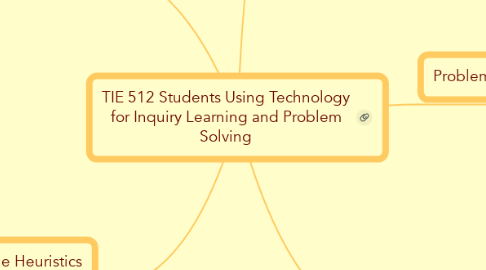TIE 512 Students Using Technology for Inquiry Learning and Problem Solving
by Eric Slaughter


1. Modeling
1.1. Forms
1.1.1. Oral or Written
1.1.2. Digital
1.1.3. Simulations
1.2. examples
1.2.1. Storytelling
1.2.2. Databases
1.2.3. Concept Webs
1.2.4. Maps
1.2.5. Models
2. The Heuristics
2.1. The 5 "Gets"
2.1.1. Get Data
2.1.2. Get Talking
2.1.3. Get them Graphical
2.1.4. Get them Digital
2.1.5. Get them Disaggregated
2.2. The 5 "W's"
2.2.1. Why
2.2.2. What
2.2.3. Where
2.2.4. When
2.2.5. Who
2.3. SMART Goals
2.3.1. Specific
2.3.2. Measurable
2.3.3. Attainable
2.3.4. Realistic
2.3.5. Timely

